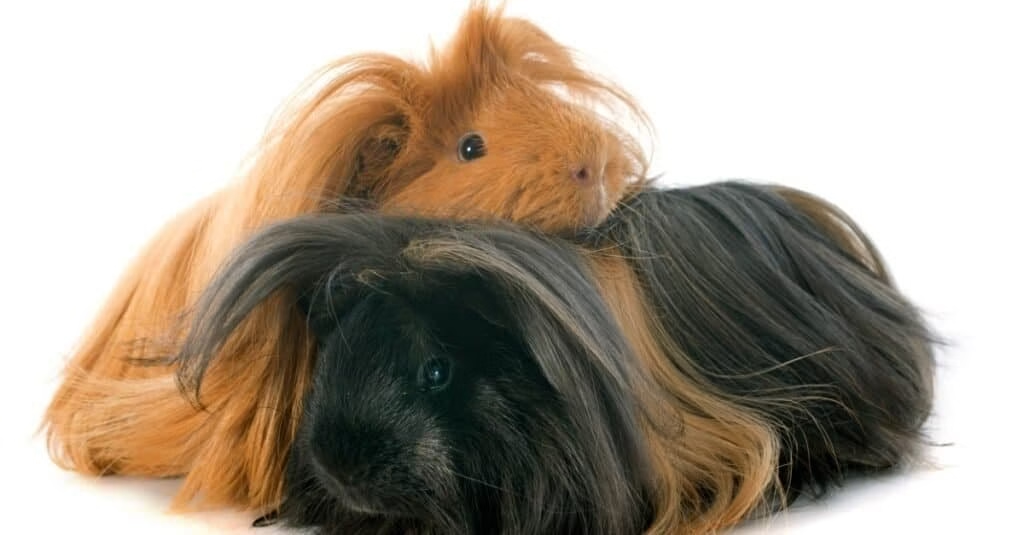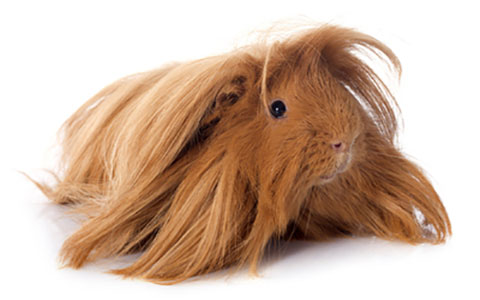A brief overview of the Peruvian Guinea Pig: The Peruvian Guinea Pig, scientifically known as Cavia porcellus, is a domesticated rodent species originating from the Andean region of South America, particularly Peru. It is one of the most iconic and widely recognized breeds of guinea pigs due to its distinctive long, flowing hair. The Peruvian Guinea Pig is known for its docile nature, making it a popular choice as a household pet.
Importance and cultural significance in Peru
In Peru, the Peruvian Guinea Pig holds significant cultural importance, dating back to ancient times. It has been a staple in Peruvian cuisine for centuries, particularly in traditional dishes such as “cuy” (guinea pig meat). Additionally, the Peruvian Guinea Pig is symbolic in Andean culture, often associated with fertility, prosperity, and ancestral beliefs. Its presence in ceremonies and rituals underscores its deep-rooted significance in Peruvian society.
Taxonomy and Classification
A. Scientific classification (species, genus, family)
The Peruvian Guinea Pig (Cavia porcellus) belongs to the following taxonomic classifications:
- Kingdom: Animalia
- Phylum: Chordata
- Class: Mammalia
- Order: Rodentia
- Family: Caviidae
- Genus: Cavia
- Species: Cavia porcellus
B. Relationship to other guinea pig breeds
The Peruvian Guinea Pig shares its genus (Cavia) with other domesticated guinea pig breeds, including but not limited to:
- American Guinea Pig (Cavia porcellus)
- Abyssinian Guinea Pig (Cavia porcellus)
- Skinny Pig (Cavia porcellus)
- Texel Guinea Pig (Cavia porcellus)
- Coronet Guinea Pig (Cavia porcellus)
- Andean Guinea Pig (Cavia porcellus) These breeds may differ in physical characteristics, such as fur type, coloration, and length, but they all belong to the same species, Cavia porcellus.
Physical Characteristics
A. Size and weight
The Peruvian Guinea Pig is typically larger than other guinea pig breeds, with adults reaching an average length of 10 to 12 inches (25 to 30 centimeters) and weighing between 2 to 3 pounds (0.9 to 1.4 kilograms). However, individual size and weight can vary based on genetics, diet, and overall health.
B. Fur texture and color variations
The most distinctive feature of the Peruvian Guinea Pig is its long, flowing hair, which can grow up to 20 inches (50 centimeters) in length if not trimmed. The fur is fine and silky, often requiring regular grooming to prevent matting and tangling. Peruvian Guinea Pigs come in various colors and patterns, including solid colors (white, black, and brown), bi-color, tri-color, tortoiseshell, and more. The fur can also exhibit various markings and patterns, adding to the breed’s aesthetic appeal.
C. Unique features (long hair, smooth coat, etc.)
One of the most unique features of the Peruvian Guinea Pig is its long, flowing hair, which grows continuously throughout its life. This long coat is often called a “mane” and requires special care to maintain its health and appearance. Unlike other guinea pig breeds with shorter hair or smooth coats, the Peruvian Guinea Pig’s mane can be styled and groomed in various ways, showcasing its elegance and beauty. Despite its long hair, the Peruvian Guinea Pig maintains a smooth and sleek body underneath, contributing to its overall charm and appeal as a pet.
Habitat and Distribution
A. Native habitat in Peru
The Peruvian Guinea Pig is indigenous to the Andean region of South America, particularly Peru. They are found in various habitats in Peru, ranging from high-altitude mountainous regions to lower-elevation grasslands and agricultural areas. These guinea pigs are well adapted to the Andean climate, which includes cool temperatures, limited vegetation, and high altitude.
B. Adaptations to various environments
Peruvian Guinea Pigs have adapted to diverse environments within their native range. Their ability to thrive in different habitats is attributed to their flexible diet, mainly grasses, leaves, and vegetables. They have also developed behavioral adaptations to survive predation, such as hiding in burrows or dense vegetation when threatened. Additionally, their thick fur provides insulation against cold temperatures, allowing them to inhabit high-altitude areas.
C. Domestication and global distribution
Domestication of guinea pigs, including the Peruvian breed, began thousands of years ago by indigenous peoples in the Andean region, particularly in Peru. Initially kept for food and later as pets, guinea pigs were selectively bred for various traits, including coat length, color, and temperament. Today, Peruvian Guinea Pigs are popular pets worldwide, and they can be found in households and pet stores across the globe. Their domestication has led to a wide distribution beyond their native range, with enthusiasts and breeders contributing to their popularity in different countries.
Behavior and Social Structure
A. Natural behavior in the wild
In their natural habitat, Peruvian Guinea Pigs exhibit social and diurnal behaviors. They are primarily herbivorous, spending much time foraging for vegetation such as grasses, leaves, and roots. Peruvian Guinea Pigs are also prey animals, so they are cautious and alert, constantly scanning their surroundings for potential threats. They may live in small groups or colonies, seeking safety in numbers, and they often build burrows or use existing shelters for protection from predators and adverse weather conditions.
B. Social interactions and hierarchy
Within their social groups, Peruvian Guinea Pigs establish a hierarchy based on dominance and submission. Dominant individuals may assert their status through vocalizations, scent marking, and physical interactions, while subordinate members may display submissive behaviors to avoid conflict. Social interactions among guinea pigs include grooming, vocalizations (such as chirping and purring), and mutual grooming to strengthen social bonds. Maintaining a stable social hierarchy is essential for minimizing aggression and promoting cooperation within the group.
C. Interaction with humans as pets
Peruvian Guinea Pigs can exhibit various behaviors as pets depending on their personality and environmental factors. They are known for their gentle and sociable nature, often forming strong bonds with their human caregivers. Peruvian Guinea Pigs may enjoy interaction and handling from humans, especially if they are introduced to it from a young age. They may also display playful behaviors, such as popcorning (small jumps) and exploring their environment. Providing ample opportunities for socialization, enrichment, and mental stimulation is essential for ensuring the well-being and happiness of pet Peruvian Guinea Pigs.
Diet and Feeding Habits
A. Natural diet in the wild
In the wild, Peruvian Guinea Pigs primarily consume a diet of various vegetation found in their native Andean habitat. This includes grasses, herbs, leaves, roots, and occasional fruits and seeds. Their natural diet is high in fiber and low in fat, reflecting the nutritional composition of the plants in their environment. They are also known to practice coprophagy, the consumption of their feces, which aids in the digestion of fiber-rich plant material and the absorption of essential nutrients.
B. Domesticated guinea pig diet
Domesticated Peruvian Guinea Pigs require a diet that closely mimics their natural dietary preferences and nutritional needs. A balanced diet for pet guinea pigs typically consists of high-quality hay (such as timothy, orchard grass, or meadow hay), fresh vegetables (such as leafy greens, bell peppers, carrots, and cucumbers), and a limited amount of commercial guinea pig pellets. Hay should make up most of their diet, providing essential fiber for proper digestion and dental health. Fresh vegetables supplement their diet with essential vitamins and minerals, while pellets serve as a concentrated source of nutrients. It’s important to avoid feeding guinea pigs foods high in sugar, fat, or calcium, as these can lead to health issues such as obesity, dental problems, and urinary tract disorders.
C. Nutritional requirements and feeding practices
Peruvian Guinea Pigs have specific nutritional requirements to maintain optimal health and well-being. They require a diet high in fiber to support proper digestion and dental wear. Fresh vegetables should be offered daily to provide essential vitamins, particularly vitamin C, as guinea pigs cannot synthesize this alone. Access to clean, fresh water is also essential to prevent dehydration. Feeding practices should include providing a variety of vegetables to ensure nutritional diversity, monitoring food intake to avoid overfeeding and obesity, and regularly cleaning food and water dishes to maintain hygiene. It’s also essential to consult with a veterinarian or exotic animal specialist for guidance on diet and nutrition specific to individual guinea pig needs.
Reproduction and Life Cycle
A. Mating behaviors and breeding season
Peruvian Guinea Pigs typically reach sexual maturity around 2 to 3 months of age, although the exact timing can vary based on individual development and environmental factors. Mating behaviors include courtship displays such as vocalizations, chasing, and mounting. Breeding season for guinea pigs is year-round, as they do not have a specific mating season. However, female guinea pigs are fertile throughout the year and can go into heat approximately every 15-17 days if not bred.
B. Gestation period and litter size
The gestation period for Peruvian Guinea Pigs is approximately 59 to 72 days, with an average of around 63 days. Pregnant females may show nesting behavior, such as gathering bedding material and creating a cozy nest for giving birth. Litter sizes can vary but typically range from 1 to 6 pups, with an average of 2 to 4 pups per litter. Larger litters are less common but can occur, especially in well-nourished and healthy females.
C. Development of offspring and parental care
Newborn Peruvian Guinea Pigs, known as pups, are born with their eyes open and are fully furred. They are relatively independent from birth and can move around and nurse from their mother shortly after birth. Mother guinea pigs provide maternal care by nursing and grooming their offspring, maintaining the nest, and keeping them warm. Pups start exploring solid food within a few days of birth but continue nursing for several weeks until weaning occurs, typically around 3 to 4 weeks. During this time, the mother gradually introduces solid foods to the pups’ diet, facilitating the transition to an adult diet. While Peruvian Guinea Pigs generally exhibit good maternal instincts, occasional monitoring by the caregiver is essential to ensure the mother’s and her offspring’s health and well-being.



